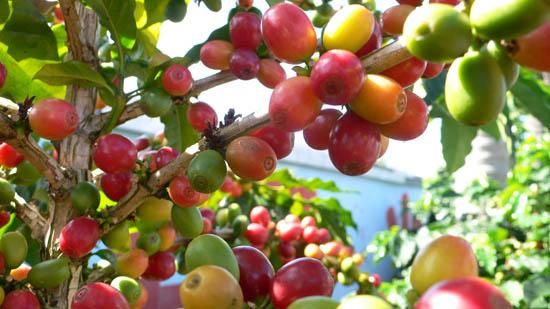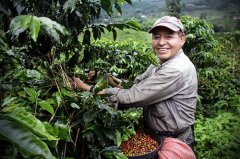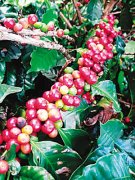The Colombian Triple Crown King wants manor honey to treat rare mocha bean boutique coffee.
In 2011, Incht Manor's first global bid for their first batch of Mocca mocha species was marked at US $211.5 / lb, surpassing the record of US $170.2 / lb for the first ESMERALDA GEISHA Jade Manor in BOP in 2010 and US $500.5 / lb in 2012, setting a world record and more noble than a geisha. Mocha (Mocca because the bean shape is very small, also known as small mocha) in Central and South America, the small mocha is not only small, but also has a low yield. generally, the mocha is about 10 to 11 orders, that is, the bean paste ranges from 0.39cm to 0.43cm, which is much smaller than the average 18-purpose Central American bean, which is 0.7cm. Notice that the little mocha has a flat surface, that is, a fruit contains two raw beans. Of course, small mochas also have small round beans, but the proportion is only 2%, which is much lower than the 5% to 10% of the average Arabica.
What we are launching this time is the honey-treated mocha beans from Caf é Granja La Esperanza, Columbia's Triple Crown Manor. Hope Manor has four estates (Esperanza, Las Margaritas, Cerro Azul and Potosi). Its manor won the Best of Panama Best Panama Champion (2008) and runner-up (2009) *. 2012 even arranged three seats in the top ten of SCAA Coffee of the Year with three products, the incredible number 2, 3 and 7. In GFA (Good Food Award), which has just been announced, Hope Manor has become the only award-winning estate outside Ethiopia, Kenya and Panama.
Small mocha is a variety of bourbon, from Ethiopia or Yemen, and then transplanted to Brazil, Hawaii, Guatemala and Colombia. the bean is naturally small and round, not peaberry, but when it comes to Hawaii, it is mixed with Tibica to become a tall mocha to adapt to the soil and water of Maui, Hawaii, but the bean still retains its original small lovable appearance. Guatemala or Colombian mocha may be from Brazil or Hawaii, if it is from Brazil, it will retain the original dwarf characteristics, if from Hawaii, it may be a modified tall mocha.

Important Notice :
前街咖啡 FrontStreet Coffee has moved to new addredd:
FrontStreet Coffee Address: 315,Donghua East Road,GuangZhou
Tel:020 38364473
- Prev

Rose summer Geisha Colombian Cauca Cauca Valley Hope Manor boutique coffee
According to the Panamanian Emerald Manor website, rose summer coffee seeds were taken from Geisha Mountain (Mount Rosa) in southwestern Ethiopia in 1931, transplanted to Kenya in 1931 and 1932, replanted in Tanzania in 1936 and introduced to Costa Rica in 1953. It is not known when it will be introduced to Jaramillo Manor in Panama.
- Next

Single bourbon beans Musiui washing in the western province of Luanda, Rwanda
Like many African countries, Rwandan coffee is mainly produced by small farmers, and the ripe cherry fruits are collected and sent to the processing station every year during the harvest period. During the annual harvest period, the ripe coffee berries picked by farmers are concentrated in the treatment station for treatment, first selected by hand to ensure that no immature or damaged fruit is mixed in. Then remove the peel in a cool, cold ring
Related
- Does Rose Summer choose Blue, Green or Red? Detailed explanation of Rose Summer Coffee plots and Classification in Panamanian Jade Manor
- What is the difference between the origin, producing area, processing plant, cooperative and manor of coffee beans?
- How fine does the espresso powder fit? how to grind the espresso?
- Sca coffee roasting degree color card coffee roasting degree 8 roasting color values what do you mean?
- The practice of lattes: how to make lattes at home
- Introduction to Indonesian Fine Coffee beans-- Java Coffee producing area of Indonesian Arabica Coffee
- How much will the flavor of light and medium roasted rose summer be expressed? What baking level is rose summer suitable for?
- Introduction to the characteristics of washing, sun-drying or wet-planing coffee commonly used in Mantenin, Indonesia
- Price characteristics of Arabica Coffee Bean Starbucks introduction to Manning Coffee Bean Taste producing area Variety Manor
- What is the authentic Yega flavor? What are the flavor characteristics of the really excellent Yejasuffi coffee beans?

